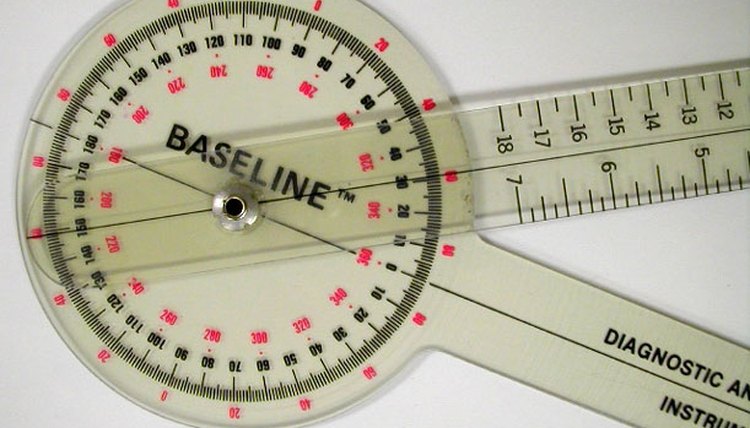How to Use a Goniometer

A goniometer is used in the medical field to measure a joint's range of motion. It can be helpful in determining if a patient is lacking in mobility due to an injury, or how well he is recovering after sustaining an injury. The term "goniometer" comes from two Greek words that mean "angle" and "measure." This is essentially what you are doing when you measure range of motion--measuring an angle.
Place the goniometer over the fulcrum of the joint. This will vary depending on which joint you are measuring. Place the stationary arm of the goniometer along the stationary line of the body (again, this will vary depending on which joint you are measuring), and the movable arm on the moving part of the body.
Ask your patient to move the joint in the desired direction. Have the patient move to her fullest extent of motion, following the movement with the movable arm of the goniometer. Make sure the stationary arm stays straight.
Stabilize the stationary portion of the body. This is the part of the body that is proximal (closer to the midline of the body) to the joint you are testing. It is important that the patient does not move his body while moving the joint; this step isolates the joint movement for a more accurate measurement.
Look at the reading on the goniometer before removing it from the patient's body. Ensure that you take an accurate reading of the degree of motion on the goniometer, and that you consistently use the same stationary and movable landmarks on the body when measuring, to ensure consistency. Be sure to record the range of motion for the joint.
Tips
Stabilize the area of the body that is proximal to the joint being tested. If this area is small (such as the lower leg, if you are testing the ankle), you can hold the stationary arm of the goniometer to the proximal section of the body while stabilizing.
Warnings
Be careful not to move the stationary arm of the goniometer when taking readings. This will throw off your final reading.
Resources
Writer Bio
Based in Dayton, Ohio, Sari Hardyal has been writing fitness, sports, entertainment and health-related articles for more than five years. Hardyal holds a Bachelor of Science in mass communication from Miami University and is pursuing her master's degree in occupational therapy and her doctorate in physical therapy. She is a certified personal trainer with the National Federation of Professional Trainers.
